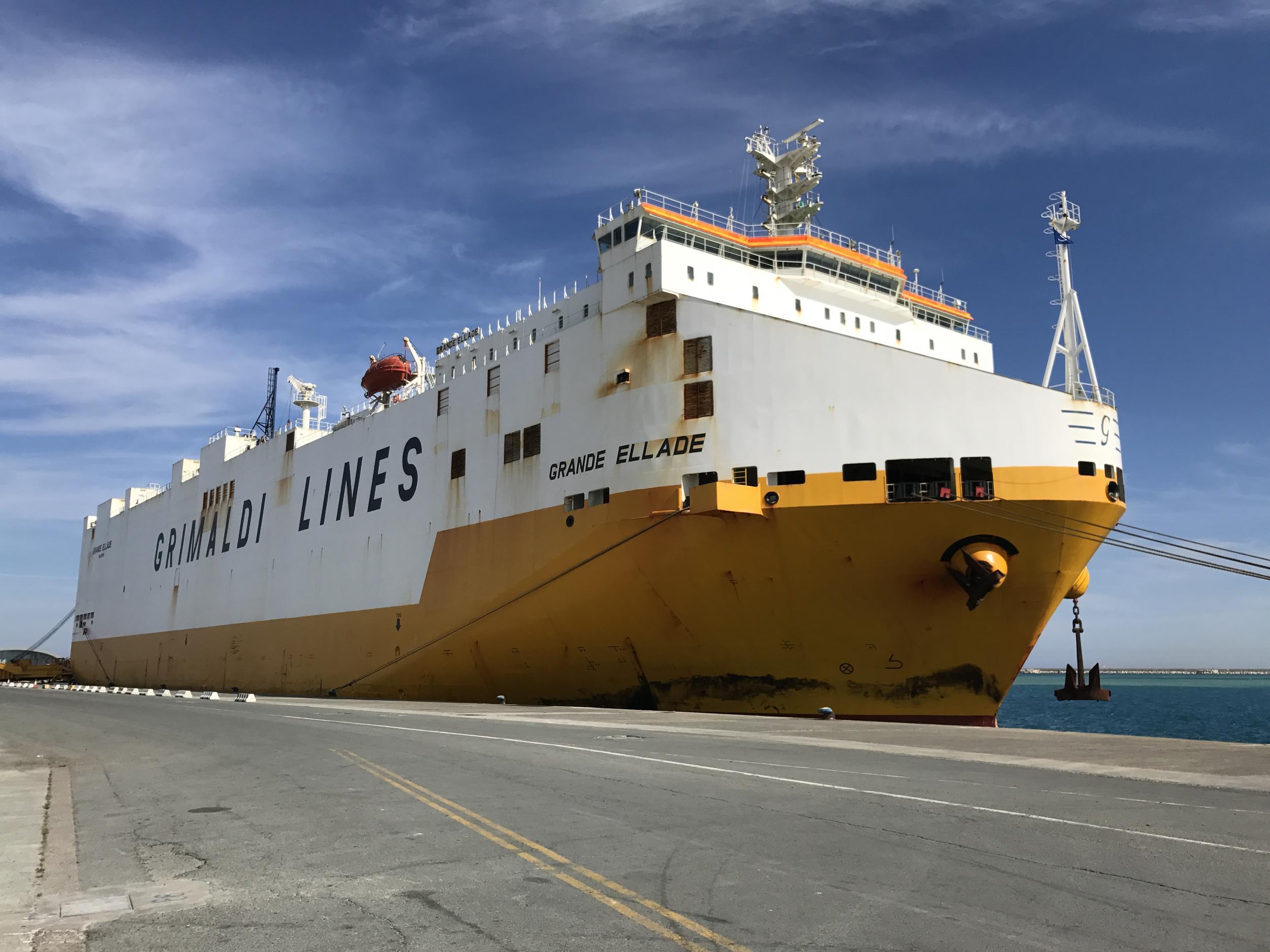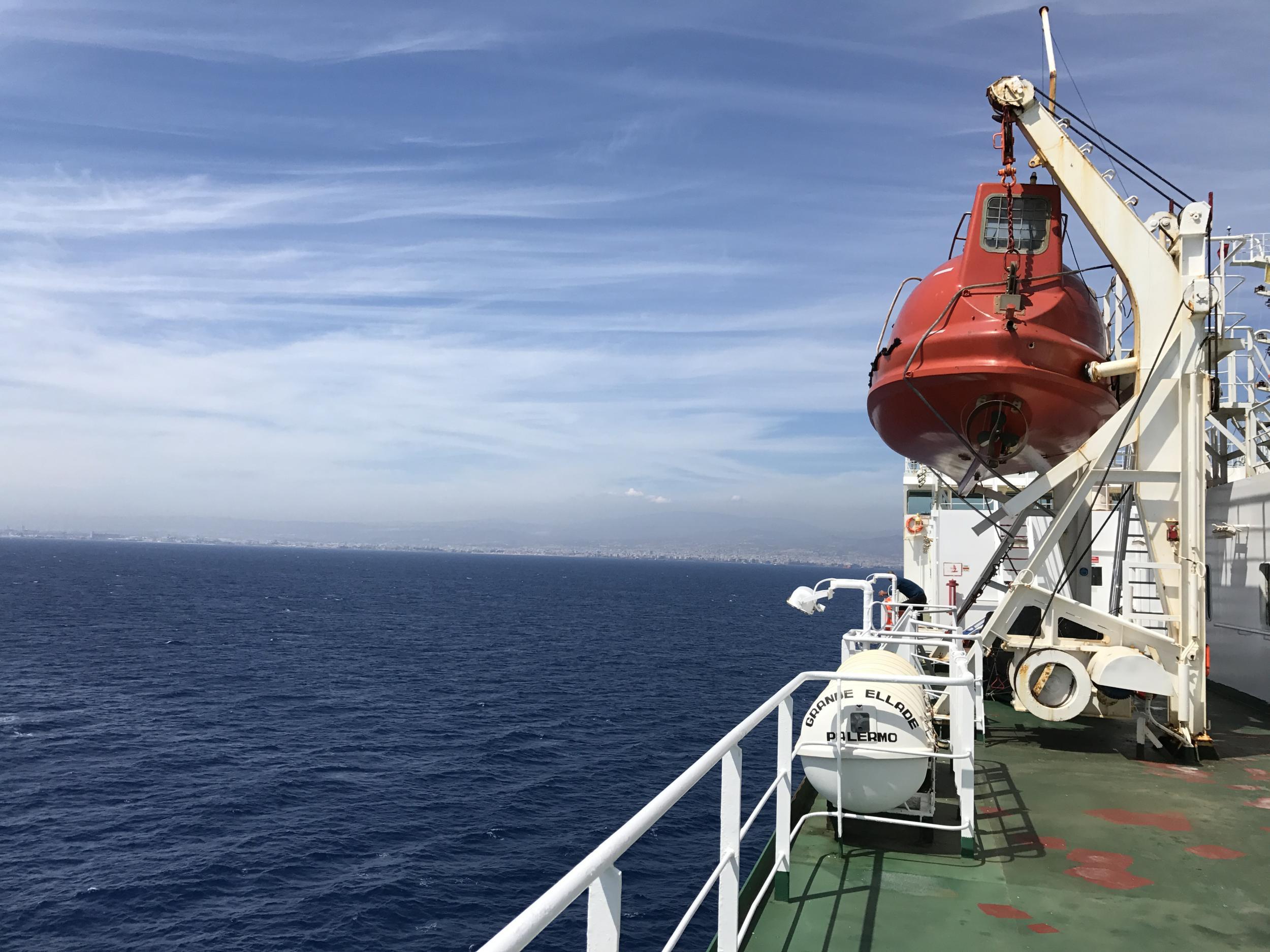What it's really like to go on a cargo cruise around the Med
Who needs a tricked-out cruise ship full of passengers when you can have a boat to yourself? Sarah Treleaven checks out cargo cruising

Your support helps us to tell the story
From reproductive rights to climate change to Big Tech, The Independent is on the ground when the story is developing. Whether it's investigating the financials of Elon Musk's pro-Trump PAC or producing our latest documentary, 'The A Word', which shines a light on the American women fighting for reproductive rights, we know how important it is to parse out the facts from the messaging.
At such a critical moment in US history, we need reporters on the ground. Your donation allows us to keep sending journalists to speak to both sides of the story.
The Independent is trusted by Americans across the entire political spectrum. And unlike many other quality news outlets, we choose not to lock Americans out of our reporting and analysis with paywalls. We believe quality journalism should be available to everyone, paid for by those who can afford it.
Your support makes all the difference.It wasn’t your average cruise. The ship’s first officer, walking very briskly, showed us to the small, dorm-like room we had been assigned. It had one single bed and a couch that had been made up into a second bed. There was also a desk, a small armoire and a very tight bathroom – all very clean but very modest.
We had just boarded a Grimaldi cargo ship to spend five days sailing from Ashdod in Israel to Salerno. Jamie, my boyfriend, looked at me and smiled. We both knew this had been his idea. The trip was a fulfillment of Jamie’s dream and his love of massive industrial things. I was promised that I would have fun, too, but we both know that my idea of fun involves circulating canapés.
We’d booked the journey through a shipping agent with relative ease. At €1,230 for the cabin, it wasn’t overly cheap, and the information online was sparse, but as soon as we stepped onboard I realised exactly what this was: we were going to spend five days sailing on a massive steel parking garage, dropping new Fiats and used Mercedes in Limassol and Alexandria before docking in Italy, where we would disembark.
Our cabin was on the tenth floor, as were all the facilities we had access to: a dining room, lounge, and super-depressing “gym” complete with unplugged treadmill and ping pong table. We dumped our stuff and wandered down the hall to take our first meal.
Before embarking, I’d had visions of hobnobbing with a bunch of handsome Italian officers who would regale me with tales of giant squid sightings while pouring me limoncello. Instead, I found an austere room with one long table for the dozen or so officers (there was a similarly-sized group of mostly Filipino crew who had separate eating and sleeping quarters) and one small table for passengers.
We introduced ourselves to the only other passenger: a middle-aged, sandal-wearing German, who’d just spent six months driving around Israel: “the land of the Bible.” He went on to explain that he had spent "a night or two” on the West Bank.
“I can see now,” he said, imparting the deep expertise that can only be summoned from a night or two in a place, “why Israel can never give it back”.
Under normal circumstances, I’d have rolled my eyes and excused myself, but on the ship, we were stuck. For five days, we tried not to bring up politics. Many meals were eaten in near-silence with only occasional requests to pass the bread or salt.

Unlike the conversation, though, the food on the ship was both competent and plentiful. Breakfast was homemade bread and plum jam, but lunch and dinner involved multiple courses of pasta or soup, followed by fish or meat, plus a small lettuce salad with the occasional carrot or tomato. Dessert was always fruit. We were each given one adorable 250ml bottle of red wine with dinner.
On the first slow-moving day at sea, with no access to WiFi on the ship, I read and then reread all of the remaining tabs open in my internet browser. I thought of it as akin to fondly re-examining pictures of someone who recently died.
Soon, though, we found our rhythm. Days revolved around meals, for which – in true cruise style – I was never hungry but always ate. We watched fuzzy BBC World News in the lounge. We sat on deck and watched the lovely nothingness of the open sea. Occasionally, we were allowed on the bridge, where the captain made us a cup of black tea blended with spices he’d collected around the world. There were pre-dinner cocktails, mixing vodka we’d brought ourselves with juice pressed from Italian oranges. We were in bed most nights by 9pm, squeezed into one of the single beds to watch a movie.
Pulling into the ports at Limassol and Alexandria was thrilling. Disappointingly, we weren’t allowed off the boat, but loved every minute of standing on deck to watch the verdant Cypriot coastline or chaotic Egyptian city slowly come into focus while surrounded by working ships from around the world.

Unlike a conventional cruise, where an abundant staff bends over backwards, the officers were nice but preoccupied by the ship. Even with dozens of people on board, we were most often alone. It was just Jamie, me and the sea – along with some decent but not great Sicilian wine that we bought from the ship’s avuncular chef for €5.
Gradually, small intimacies emerged. On the third day, the chef blew me a kiss when I thanked him for lunch. The next day, filling handmade cannolo shells with sweetened ricotta, he beckoned us into the kitchen. He handed us each a finished cannolo, filled a bowl with four more and thrust it towards us, nodding towards our room. “Shhhhhhh,” he said.
On the fourth day, with two days at sea stretching ahead of us, I finally got restless. The lack of activity worked like a sedative, and I was keen to be reconnected to the world.
The next morning, when I woke in the Tyrrhenian Sea to a view of Calabria’s spectacular mountains, I had a burst of cabin fever and a thought popped into my head: how long would it take to swim to shore? Luckily, we docked in Salerno a few hours later.
But when we finally disembarked and I was back on dry land, I turned back to look at the old ship and realised that I would do it all again. Only I’d want to disembark at every port next time. Also, I would bring more vodka.
Travel essentials
Sarah travelled with Allalouf, an Israeli shipping agent. The total voyage (including all meals) cost €615 per person. Two of the most popular global booking agents are The Cruise People and Freighter Expeditions, but you can also book directly through some many operators, including CMA-CGM and Marine Link Tours. Unlike conventional cruises, itineraries often aren’t firmly set until six to eight weeks before the journey, so don’t expect an early bird special. Additional expenses can include specialised transport to and from ports, security clearance fees, and wine.
Join our commenting forum
Join thought-provoking conversations, follow other Independent readers and see their replies
Comments